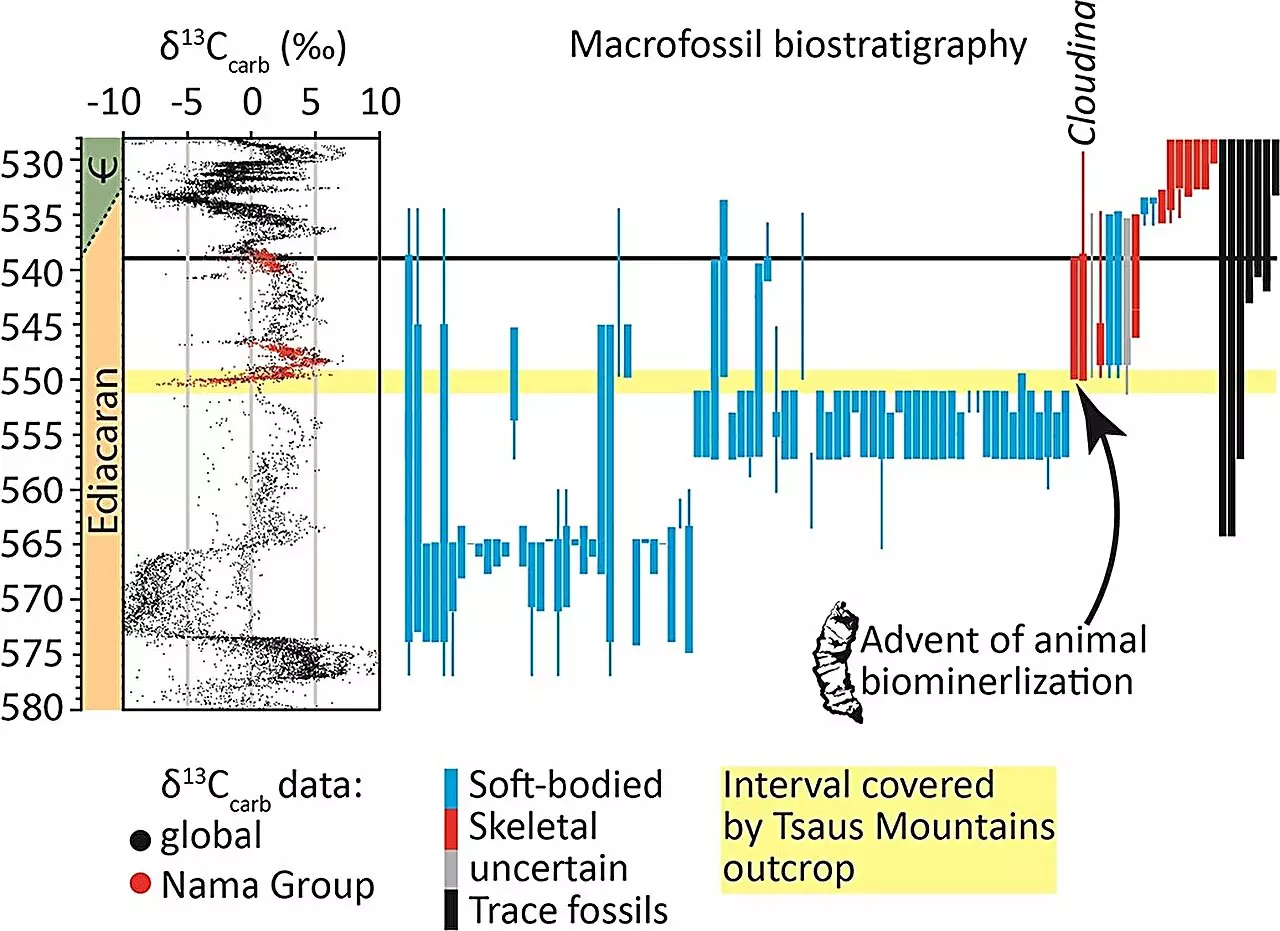Life on Earth has evolved over billions of years, starting from a single-celled microbe to the complex multicellular organisms that we see today. One crucial process that played a significant role in this evolutionary journey is biomineralization. This phenomenon involves the production of hardened mineralized tissues, such as skeletons, by living organisms. Not only did biomineralization give rise to a variety of body plans, but it also had a profound impact on the planet’s carbon cycle.
In recent years, the discovery of fossil skeletons has provided valuable insights into the origins and effects of biomineralization. One such discovery is the presence of cloudinids, tubular structures composed of carbonate cones, dating back to the Ediacaran period, approximately 551-550 million years ago. These fossils, found in Tsau Khaeb National Park, Namibia, have drawn the attention of Dr. Fred Bowyer and his colleagues from the University of Edinburgh.
To understand the significance of these fossils, the research team conducted a comprehensive study combining sediment analysis with geochemical data. The researchers focused on carbon and oxygen isotopes, which provide insights into the marine environment and the planet as a whole. By analyzing limestones from the Kliphoek Member in the Nama Group, they aimed to determine the location, timing, and reasons behind the initiation of biomineralization.
During their fieldwork in Namibia, the researchers observed a fascinating glimpse into the history of life through ichnofossils. These traces of ancient activity, while not preserving the remains of organisms, provided evidence of structures created by soft-bodied microbes. These structures were found in the lower part of the study site, known as the Mara Member, indicating their existence before biocalcification occurred.
Above the Mara Member, the research team began to discover the first signs of Cloudina in the Kliphoek Member. Cloudina is characterized by distinctive conical fossils with nested cone structures. Through analysis of the calcium carbonate limestone rocks surrounding these fossils, the researchers uncovered valuable information about the marine environment and the planet’s conditions.
The isotopic signature of carbon and oxygen in the fossils revealed important insights. The ratios of 12C to 13C and 16O to 18O were indicative of the marine environment and global temperatures. Higher global temperatures, for example, lead to evaporation of seawater, leaving the ocean enriched in heavier 18O. The carbon isotopes were influenced by photosynthesis, respiration, and upwelling zones, highlighting changes in ocean productivity.
The geochemical data indicated that Cloudina originated in a semi-restricted environment connected to the ocean but more closed off from open marine conditions. The lower 12C/13C ratio and elevated 16O/18O ratio were characteristic of a low oxygen environment with periodic increases in oxygenation. This suggests that sustained oxygenation alone did not lead to the appearance of skeletonization.
The research team posited that particularly high carbonate concentrations in the ocean were necessary for the formation of Cloudina’s calcified structure. These high concentrations resulted from a period of marine transgression, during which the shoreline moved landward. The study site experienced shallow intertidal conditions in an evaporite basin before sea levels rose again, leading to the deposition of sandstones and calcitic sediments in shallow open marine conditions.
The deposition of open marine carbonates above a redoxcline, a layer with significant differences in water oxygenation, allowed for Cloudina biomineralization to occur. This finding, in line with previous research, supports the idea that Cloudina and similar microbiota were opportunistic colonizers, taking advantage of short-lived periods of oxygenation in otherwise relatively anoxic conditions. The instability of the marine environment may have driven the evolutionary novelty of skeletonization.
The study of fossil skeletons and the analysis of geochemical data provide valuable insights into the origins and impact of biomineralization. The discovery of Cloudina fossils in Namibia has shed light on the environmental conditions necessary for the emergence of skeletal structures. The research suggests that the evolutionary development of skeletons was influenced by periods of oxygenation and sea level oscillations in an otherwise low oxygen environment. By understanding these processes and their effects on Earth’s carbon cycle, we gain a deeper understanding of the history and mechanisms of life on our planet.



Leave a Reply